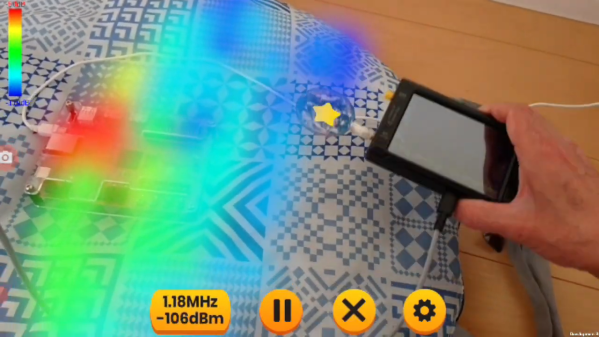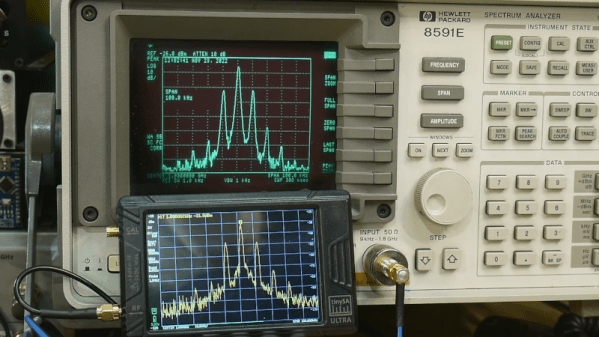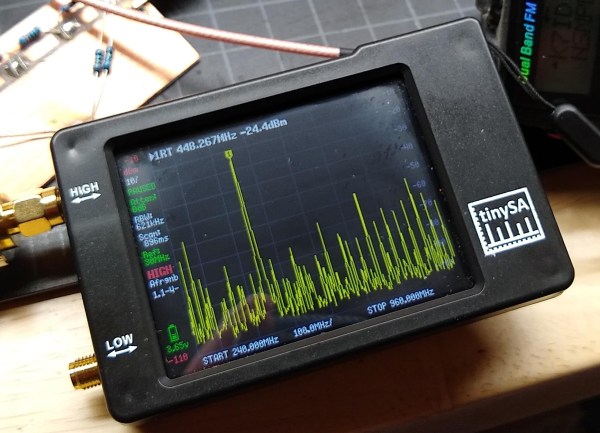Intellectually, we all know that we exist in a complex soup of RF energy. Cellular, WiFi, TV, public service radio, radar, ISM-band transmissions from everything from thermometers to garage door openers — it’s all around us. It would be great to see these transmissions, but alas, most of us don’t come from the factory with the correct equipment.
Luckily, aftermarket accessories like RadioFieldAR by [Manahiyo] make it possible to visualize RF signals. As the name suggests, this is an augmented reality system that lets you inspect the RF world around you. The core of the system is a tinySA, a pocket-sized spectrum analyzer that acts as a broadband receiver. A special antenna is connected to the tinySA; unfortunately, there are no specifics on the antenna other than it needs to have a label with an image of the Earth attached to it, for antenna tracking purposes. The tinySA is connected to an Android phone — one that supports Google’s ARCore — by a USB OTG cable, and a special app on the phone runs the show.
By slowly moving the antenna around in the field of view of the phone’s camera, a heat map of signal strength at a particular frequency is slowly built up. The video below shows it in action, and the results are pretty cool. If you don’t have a tinySA, fear not — [Manahiyo] has a version of the app that supports a plain old RTL-SDR dongle too. That should make it easy for just about anyone to try this out.
And if you’re feeling deja vu about this, you’re probably remembering the [Manahiyo]’s VR spectrum analyzer, upon which this project is based.
Continue reading “Inspect The RF Realm With Augmented Reality”















